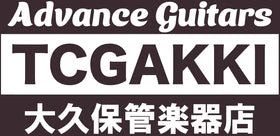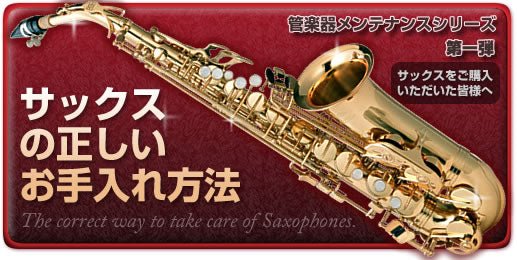
Thank you for purchasing a saxophone at Okubo Wind Instrument Store.
Proper daily care is essential for an enjoyable saxophone life. If you think "I already know how to take care of my saxophone," you may actually be wrong! You may be wrong!
Here we summarize the important points of daily care for our customers.
Red partare points that are particularly prone to error. Please read through them before using the product!

Before playing the saxophone
*Before touching your instrument, wash your hands clean. If there is no washroom nearby, wipe perspiration off your palms thoroughly with a wet wipe or handkerchief. Sweaty hands are not only a source of stains on the windpipe and damage to the plating, but can also cause poor keys.

|
|
|
|
|
Do not paint anything on the neck joint! Apply cork grease to the cork at the joint between the neck and mouthpiece. A thin coat is sufficient. The ingredients are different from the slide grease used for brass instruments, which may cause cork pain. |
|
|
|
|
|
|
●Do not apply anything to the metal part that joints the neck and the body.
Wipe the metal part with a clean cloth before jointing. If the joint is left with lint or dust, it may be damaged and stuck.
|
|
|
|
|
The neck is too tight to fit! If so, have you tightened the neck retaining screws (thumbscrews) on the main body? Please loosen the thumbscrews before jointing the neck. (When the neck is removed, please leave the thumbscrews slack. ) Tightening the screws is only allowed when the neck is jointed. |
|
|
|
|
|
|

After playing the saxophone

Wipe off the grease on the cork part of the neck with a tissue. Wiping it off with a swab is absolutely NG!


|
|
|
|
|
Use the correct size swab for the neck and for the body (soprano, alto, tenor, etc.) or the swab will get clogged. ●Make sure there are no knots or tangles in the string section before threading the swabs. When threading the swab, start with the bell! Thread the neck from the side with the widest entrance. |
|
|
|
|
|
|
|
Please wash the swab regularly. It is counterproductive to pass a dirty swab through!
If you think that the swab might be clogged, please contact us. If you think "It might be clogged!Do not try to pull it out in a panic.If you think it might be clogged, do not try to pull it out by force, but take it to a music shop.Never try to force the extraction. |
|
|
|
|
|
|

|
|
|
|
|
●After putting the swab throughUse cleaning paper to absorb any moisture from the tampo (the brown leather part that seals the tone hole). |
|
|
|
|
|
|
|
●Powdered cleaning paper is available on the market, but do not use it. Even if the stickiness stops temporarily, the powder left on the tampo will attract moisture and dirt, shortening the life of the tampo and causing it to go out of adjustment. |
|
|
|
|
|
|


Finally, wipe the instrument with a soft cloth. Gently wipe away sweat and fingerprints. This will prolong the life of the lacquer and plating.
When polishing with polish, use lacquer polish for lacquered instruments and silver polish for silver-plated instruments.

●Never use a paksei▲▲ (a fuzzy stick-like substance used to remove dust from a car...). You will be fined! LOL.
It will cause moisture to accumulate in the tube, and the inside of the instrument will always be humid! Furthermore, after a few months, the "fasa fasa" part will become frayed and the instrument and case will be covered with lint. This can cause damage to the tampo.
Also, it becomes a hassle to put the swab through the instrument and just leave this in the case! I have also witnessed many horrible situations where the swabs are just left in the case. (eek~).
There is nothing good about it! (I may get in trouble with the manufacturer for saying this, but I can't lie.
Please put a desiccant bag (silica gel) inside the case to remove humidity. It is best to store the used swabs in a separate pocket on the outside of the case. If not, please store them in a plastic bag or similar.
If you do not have a socket, you will need to put the socket (black plastic cap) on the neck joint of the main body before putting the swab into the case. Without the socket, the octave key will be stressed. Please do not lose it!
|
●Leave the neck retaining screws slack.The only time you can tighten the screws is when the neck is jointed. Do not close the case lid while the instrument is still on top of the case. This can put a strain on the key and cause it to warp. |
|
|
|
|
|
|

|
|
|
|
|
If you are thinking, "What~~? No way~~! You may think, "What?Surprisingly manybut there are a surprisingly large number of them. |
|
|
|
|
|
|





